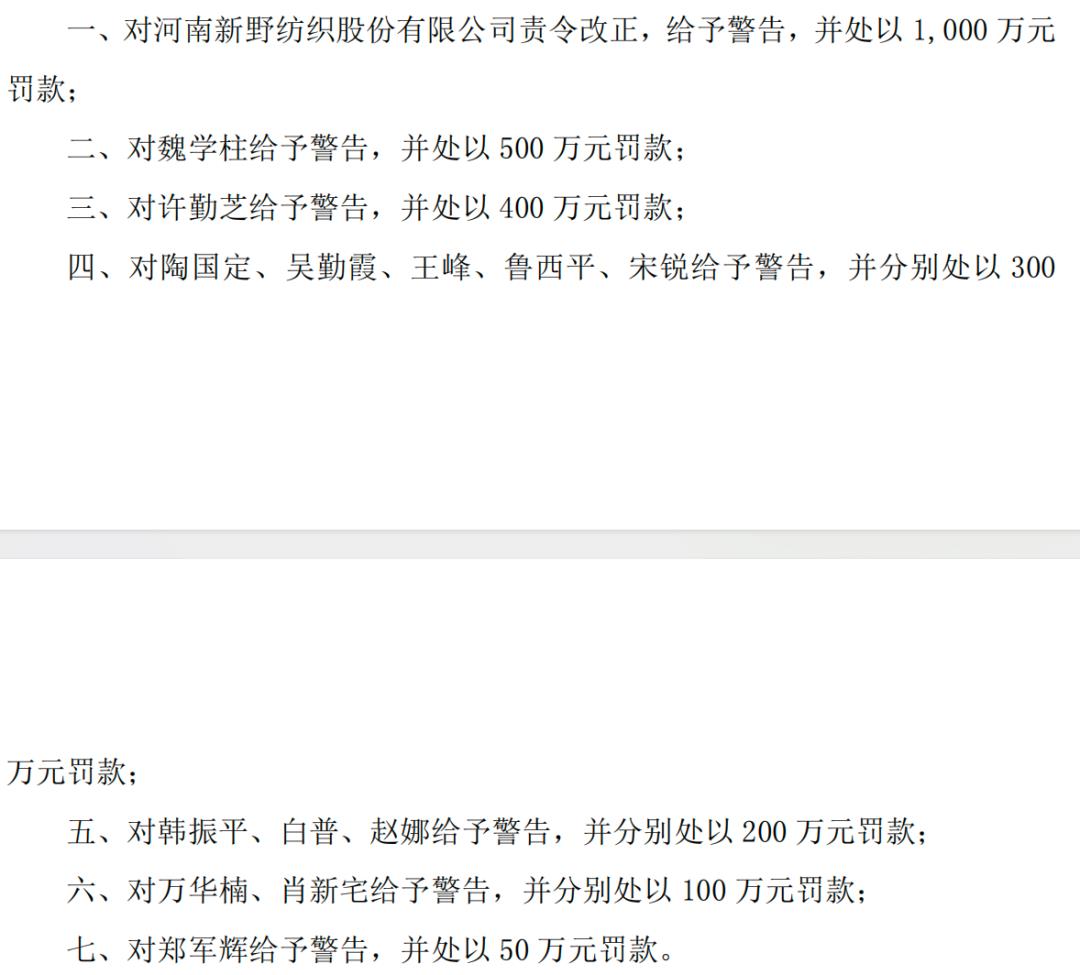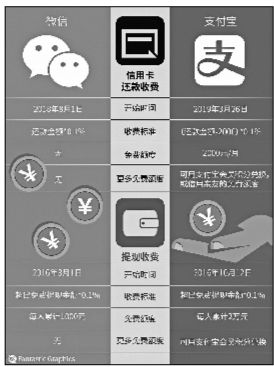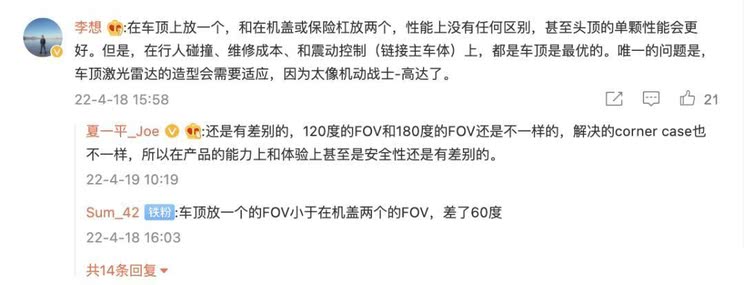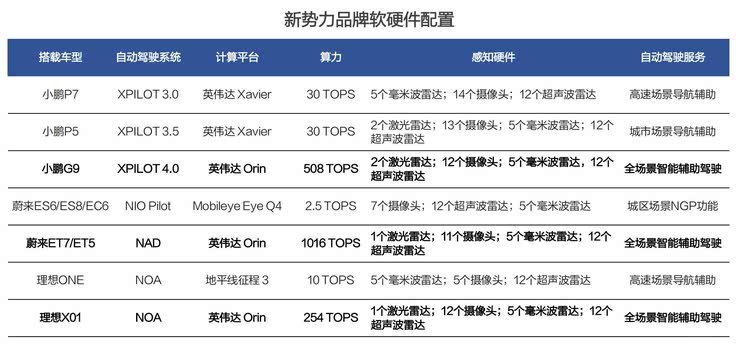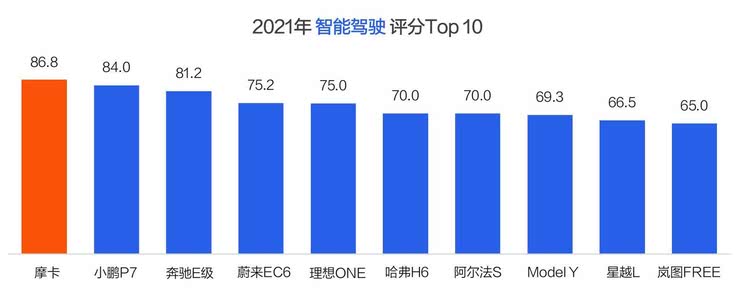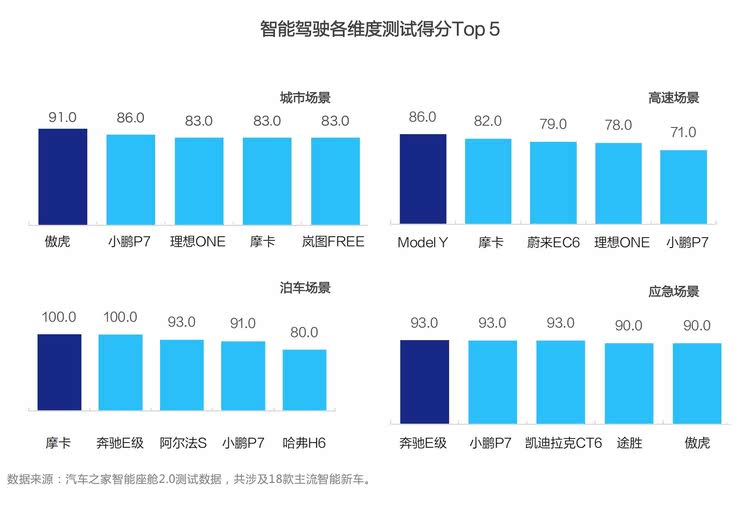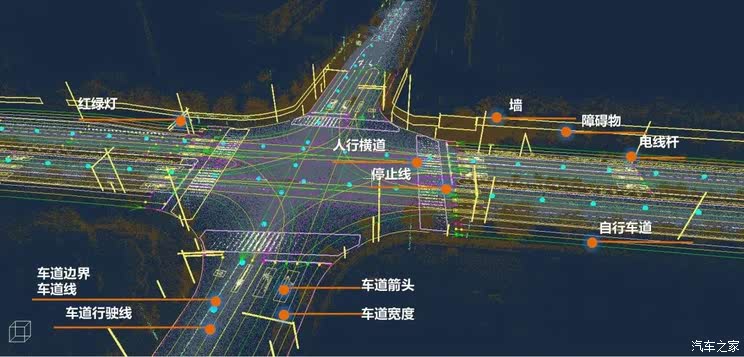Now, the candidates and projects recommended by the 2013 Shandong Science and Technology Highest Award Review Committee, Shandong Natural Science Award, Technological Invention Award and Scientific and Technological Progress Award Review Committee and Shandong International Science and Technology Cooperation Award Review Committee will be publicized to the public.
The candidates for the highest prize of science and technology in Shandong Province, the first and second prizes and projects of natural science award, technological invention award and scientific and technological progress award in Shandong Province, the candidates for international scientific and technological cooperation award in Shandong Province were publicized in Popular Daily, and the candidates and projects for the third prizes of natural science award, technological invention award and scientific and technological progress award in Shandong Province were published in Science and Technology Information News on November 19, 2013. See also the websites of Shandong Provincial People’s Government (http://www.shandong.gov.cn) and Shandong Provincial Science and Technology Department (http://www.sdstc.gov.cn).
According to the relevant regulations, if there is any objection to the proposed award candidates and projects publicized, it shall be submitted in writing within 30 days from the date of publicity to the office of Shandong Science and Technology Awards Committee (located in the Science and Technology Achievements Department of the Provincial Science and Technology Department, address: No.607 Shunhua Road, Jinan High-tech Zone, zip code: 250101).
Shandong province science and technology highest award
(1 person)
Zhao Jiajun
Zhao Jiajun, male, born in May 1961, is a doctor of medicine and professor. He is currently the vice president of Shandong Provincial Hospital, director of endocrinology department, vice chairman of endocrinology Committee of Chinese Medical Association, and chairman of Shandong Endocrinology Society. He has been selected as a leading medical talent in Shandong Province and the first batch of experts specially invited by Taishan Scholars, and has also been selected as the second-phase construction project of Taishan Scholars.
Professor Zhao Jiajun has been engaged in clinical diagnosis, treatment and basic research of endocrine and metabolic diseases for 30 years, taking thyroid diseases and diabetes as the research objects, focusing on the role of lipid metabolism disorder in the occurrence and development of endocrine diseases, and carrying out systematic basic and clinical transformation research around the relationship between lipid metabolism disorder and thyroid diseases and lipid metabolism disorder and diabetes. Breaking through the shackles of traditional theories, the author innovatively put forward the viewpoints of "TSH directly regulates cholesterol metabolism" and "intervenes lipotoxicity to prevent and treat diabetes" internationally, which provided new strategies for clinical prevention and treatment of thyroid diseases and diabetes. Professor Zhao Jiajun led the endocrinology discipline to become the first batch of clinical medical centers in Shandong Province, the post of "Taishan Scholar", the key discipline of medicine and health in Shandong Province and the key discipline of "985 Project" in Shandong University.
Professor Zhao Jiajun has presided over one national science and technology support plan, one 973 sub-project, three national natural science funds, three Shandong natural science funds, two Shandong science and technology development plans, one Shandong outstanding young and middle-aged scientist award fund, one Shandong international science and technology cooperation project, one international exchange and cooperation project of the Ministry of Health and one key clinical research project of the Chinese Medical Association. He has won 1 second prize of National Science and Technology Progress Award, 1 first prize of Shandong Natural Science Award, 2 first prizes and 2 second prizes of Shandong Science and Technology Progress Award, 1 second prize of Science and Technology Award of China Society of Integrated Traditional Chinese and Western Medicine, and 1 second prize of China Medical Science and Technology Award. He has published 276 papers, of which 65 are included in SCI (10 abstracts). Professor Zhao Jiajun has supervised more than 60 doctoral students, 3 postdoctoral students and more than 20 master students, and won the Excellent Doctoral Thesis Guidance Award of Shandong University and the Graduate Education and Teaching Achievement Award of Shandong University. The graduate students have won many outstanding papers in Shandong Province and outstanding scientific and technological innovation achievement awards for graduate students in Shandong Province.
Professor Zhao Jiajun has been successively rated as a national outstanding scientific and technological worker, an advanced worker in the national health system, an outstanding young and middle-aged expert of the Ministry of Health, an outstanding young and middle-aged scientist of Shandong Province, and one of the top ten famous doctors in Shandong Province.
Shandong Natural Science Award
the second prize
(9 items)
1. Research on parameter estimation method of a kind of complex system.
Completed by: Wang Dongqing (Qingdao University, Jiangnan University)
Ding Feng (Qingdao University, Jiangnan University)
2. Low temperature growth and fluorescence kinetics of ZnO nanostructures and arrays.
Completed by: Cao Bingqiang (Jinan University)
Cai Weiping (Hefei Institute of Material Science, China Academy of Sciences)
3. Evolution, singularity and filling behavior of carbon nanotubes/graphene composite structure.
Completed by: AARON Li (Shandong University)
Ding Feng (Hong Kong Polytechnic University)
Liu Jinmao (City University of Hong Kong)
He Yezeng (Shandong University)
Jiang Yanyan (Shandong University)
4. Research and application of nano-functional materials in biosensor analysis.
Completed by: Wei Qin (Jinan University)
Li He (Jinan University)
Du Bin (Jinan University)
Yang Minghui (Jinan University)
Wu Dan (Ji ‘nan University)
5. Study on structural regulation and catalytic performance of nano-porous metals.
Completed by: Ding Yi (Shandong University)
Zhang Zhonghua (Shandong University)
Xu Caixia (Shandong University)
Ma Houyi (Shandong University)
Xu Xiaohong (Shandong University)
6. Pathogenesis and intervention strategies of invasive pituitary adenoma.
Completed by: Pang Qi (Shandong Provincial Hospital)
Xu Guangming (Shandong Provincial Hospital)
Qu Yuanming (Shandong Provincial Hospital)
Liu Yingchao (Shandong Provincial Hospital)
Xin Tao (Shandong Provincial Hospital)
7. Study on the whole functional genomics of human epididymal sperm maturation.
Completed by: Li Jianyuan (Yuhuangding Hospital, Yantai)
Wang Haiyan (Yantai Yuhuangding Hospital)
Liu Fujun (Yantai Yuhuangding Hospital)
Liu Xin (Yantai Yuhuangding Hospital)
Liu Jie (Yantai Yuhuangding Hospital)
8. Study on the construction, stability and transmission characteristics of new soliton excitation modes.
Completed by: Bai Chenglin (Liaocheng University)
Zhao Hong (Liaocheng University)
Liu Shanliang (Liaocheng University)
Zheng Hongjun (Liaocheng University)
9. Study on new environmental functional materials and their interaction mechanism with metal ions
Completed by Qu Rongjun (ludong university)
Chen Ho (ludong university)
Sun Changmei (ludong university)
Yin Ping (ludong university)
Ji Chunnuan (ludong university)
Shandong Technological Invention Award
first prize
(3 items)
1. large diameter 4H-SiC single crystal substrate material
Completed by: Xu Xiangang (Shandong University)
Hu Xiaobo (Shandong University)
Chen Xiufang (Shandong University)
Peng Yan (Shandong University)
Gao Yuqiang (Shandong Tianyue Advanced Material Technology Co., Ltd.)
Zong Yanmin (Shandong Tianyue Advanced Material Technology Co., Ltd.)
2. Analysis method and key control technology of zone fracture of surrounding rock of deep cavern.
Completed by: Zhang Qiangyong (Shandong University)
Wang Hanpeng (Shandong University)
Li Shuchen (Shandong University)
Lin Chunjin (Shandong University)
Xue Junhua (Huainan Mining (Group) Co., Ltd.)
Ruan Guoqiang (Yanmei Heze Nenghua Co., Ltd.)
3. Controllable preparation technology of wear-resistant structural functional materials and coatings.
Completed by Cui Hongzhi (Shandong University of Science and Technology)
Sun Hongfei (Shandong University of Science and Technology)
Li Huiqi (Qingdao Haina Plasma Technology Co., Ltd.)
Zhilipeng (Qingdao Huashijie Environmental Protection Technology Co., Ltd.)
Wang Canming (Shandong University of Science and Technology)
Wang Shufeng (Shandong University of Science and Technology)
the second prize
(5 items)
1. The key technologies for the resource utilization of tannery scraps and the research and development of high-performance products.
Completed by: Li Tianduo (Shandong Institute of Light Industry)
Cui Yuezhi (Shandong Institute of Light Industry)
Lihong Fu (Shandong Institute of Light Industry)
Li Guoying (Sichuan University)
Baiqingquan (Shandong Lihou Light Industry New Material Co., Ltd.)
Xu Jing (Shandong Institute of Light Industry)
2. Technological development of extracting lithium from lepidolite by fluorine chemical method and comprehensive utilization of resources.
Completed by Kuang Ge (Fuzhou University)
Li Jishan (Shandong Ruifu Lithium Industry Co., Ltd.)
Wang Zhanqian (Shandong Ruifu Lithium Industry Co., Ltd.)
Wang Mingyue (Shandong Ruifu Lithium Industry Co., Ltd.)
Li Yong (Shandong Ruifu Lithium Industry Co., Ltd.)
Ma Chunchao (Shandong Ruifu Lithium Industry Co., Ltd.)
3. Key technologies and industrialization of fine-grained cast iron materials and high-performance nodular cast iron based on complex raw materials.
Completed by Cong Jianchen (Tianrun Crankshaft Co., Ltd.)
Cong Hongri (Tianrun Crankshaft Co., Ltd.)
Shao Shibo (Tianrun Crankshaft Company Limited)
Sun Haitao (Tianrun Crankshaft Company Limited)
Jiang Tao (Tianrun Crankshaft Company Limited)
Dai Xuezhong (Tianrun Crankshaft Company Limited)
4. Development of multi-speed automatic transmission with power shift.
Completed by: Xu Xiangyang (Beihang University)
Wang Shuhan (Sheng Rui Transmission Co., Ltd.)
Su Chengyun (Sheng Rui Transmission Company Limited)
Yu Xintao (Sheng Rui Transmission Company Limited)
Luxi (Sheng Rui Transmission Co., Ltd.)
Dai Zhenkun (Sheng Rui Transmission Company Limited)
5. Constructed wetland water purification technology with enhanced sustainable operation function.
Completed by: Zhang Jian (Shandong University)
Xu Jingtao (Shandong Jianzhu University)
Zhang Chenglu (Shandong University)
Fan Jinlin (Shandong University)
Jia Wenlin (Shandong University)
Li Cong (Shandong University)
Shandong province science and technology progress award
first prize
(25 items)
1. Key technologies and industrialization of starch derivatization.
Completed by: Shandong Institute of Light Industry
Jiangnan University/ Southern Yangtze University
Zhucheng xingmao corn development co., ltd
Completed by: Jin Zhengyu, Cui Bo, Xu Xueming, Qiu Lizhong, Tian Yaoqi, Wang Ruiming, Tan Yiping, Xie Zhengjun, Tong Qunyi, Zhao Jianwei, Wang Jinpeng, Bian Xiliang.
2. Inspur Tissot high-end fault-tolerant computer
Completed by Inspur Group Co., Ltd.
national university of defense technology
Completed by: Wang Endong, Hu Leijun, Xu Weixia, Zhang Dong, Huang Jiaming, Lin Kaizhi, Pang Zhengbin, Yin Hongwei, Wang Shouhao, Qiao Xin, Gong Weifeng and Li Yanming.
3. A new information system with low cost, low power consumption and cloud architecture
Completed by: Shandong University
Shandong Shanda ouma software co., ltd
Qingdao Haier electronics co., ltd
Completed by: Yuan Dongfeng, Jiang Mingyan, Zhang Haixia, Xu Jiali, malei, Zhai Yili, Dong Sheng, Lin He, Shu Minglei, Sun Runyuan and Guan Zhangyu.
4. Development and application of soft cotton nonwovens for medical and health care.
Completed by: Shandong Junfu Nonwovens Co., Ltd.
Shandong province nonwoven material engineering technology research center
Completed by: Chen Guanglin, Peng Wenzhong, Ning Xin, Zhang Tianlei, Luo Jun, Zhang Zhe, Hao Xiaoyi, Zhang Huaying, Wang Xishan, Chang Li and Liu Zhaopeng.
5. Research and development of marine esterase and biological resolution of chiral compounds
Completed by: Huanghai Fisheries Research Institute, Chinese Academy of Fishery Sciences.
Shandong huachen biochemistry co., ltd
Completed by: Sun Mi, Wang Yuejun, Jiang Zhengjun, Hao Jianhua, Liu Junzhong, Wang Shaojuan, Jess Weng, Kang Mei, Ji Xiaofeng, Wang Wei, Wang Fang and Sheng Jun.
6. Key technology and industrialization demonstration of tower granulation of urea-based compound fertilizer
Completed by: Stanley Fertilizer Co., Ltd.
Shanghai chemical industry research institute
National hybrid rice engineering technology research center
Baoji qindong fluid equipment manufacturing co., ltd
Completed by: Gao Jinhua, Chen Mingliang, Ma Guohui, Gao Wenkao, Liang Ji, Xie Xueshi, Kong Yizhou, Ge Jianguo, Gao Sumao, Zhang Baowei, Zhao Yuping and Zhou Li.
7. R&D and engineering application of key technologies of large-scale provincial intelligent distribution network
Completed by: Shandong Electric Power Group Corporation
Completed by: Du Qiang, Wu Jian, Wu Zhigang, Haitao, Wang Huaguang, Dong Xiao, Fang Mu, Li Lisheng, Liu Minglin, Zheng Yushi, Ma Jinliang and Yang Shaojun.
8. Research on key technologies of super-large diameter slurry shield crossing the Yangtze River under complex topographic and geological conditions.
Completed by: China Railway 14th Bureau Group Co., Ltd.
Completed by: Wang Huawei, Chen Jian, Wang Shouhui, Dai Hongwei, Zhang Commune, Han Risk, Li Zhengang, Guo Xinjun, Wang Jianhua, Yang Mingjin, Xia Xiaozhong, Zhao Yu.
9. Research on Asphalt Pavement of Qingdao Bay Bridge Deck
Completed by: Shandong Expressway Qingdao Highway Co., Ltd.
Shandong province traffic science institute
Shandong province Luqiao group co., ltd
Shandong expressway construction material co., ltd
Completed by: Li Piming, Wang Lin, Dong Shuxi, Fu Jiancun, Yang Guang, Chen Jiang, Li Jiansheng, Xu Qiang, Ma Shijie, Wang Xiaogan, Zhang Baomin, Sun Jie.
10. Asymmetric deepwater semi-submersible lifting life platform without cross braces
Completed by: Yantai CIMC Raffles Offshore Engineering Co., Ltd.
Completed by: Teng Yao, Zhao Hui, He Changhai, Li Lei, Han Huawei, Wang Shoujun, Gao Song, Tang Jianfeng, Yu Changjiang, Wang Yuanyuan, Zhang Hui and Li Peng.
11. Development and performance of new coagulants and adsorption materials for water and wastewater treatment.
Completed by: Shandong University
Completed by: Gao Baoyu, Yan Wang, Yue Qinyan, Li Qian, Zhang Yongqiang, Xu Weiying, Xu Xing, Yang Zhonglian and Li Wenhong.
12. Research and application of unconformity structure and its reservoir-controlling mechanism in petroliferous basins.
Completed by: China Shiyou University (East China)
China Petroleum Group Science and Technology Research Institute
China Petroleum Xinjiang Oilfield Branch
Geophysical Research Institute of Shengli Oilfield Branch of China Petrochemical Company
Completed by: Cha Jian, Wu Kongyou, Zou Cai, Kuang Lichun, Tan Mingyou, Yuan Xuanjun, Wu Zhiping, Zhang Yue Qian, Chen Zhonghong, Zhu Rukai, Gao Changhai, Hou Lianhua.
13. Research on filling mining method and key technology in Shandong mining area
Completed by: Shandong Energy Group Co., Ltd.
Shandong University of Science and Technology
Completed by: Bu Changsen, Zhai Minghua, Fan Jianguo, Li Wei, Guo Weijia, Guo Xinshan, Zhang Xinguo, Wang Zhaoxi, Wang Huitao and Man Zhongfeng.
14. Key technologies of dynamic water control in deep mine roadway under complex geological conditions
Completed by: Shandong Luneng Heze Coal and Electricity Development Co., Ltd.
Shandong University
Completed by: Li Shucai, Tan Binggang, Wang Xinkun, Zhang Zhe, Wu Jilu, Pan Guangming, Li Haiyan, Zhang Qingsong, Ma Fangyu, Zhang Xiao, Ma Wa and Liu Rentai.
15 deep ground pressure and water inrush dynamic disaster monitoring technology and series of experimental equipment research and development
Completed by: Shandong University of Science and Technology
Yuluoka Mining Safety Engineering Co., Ltd.
Completed by: Guo Weijia, Zhang Xinguo, Tang Jianquan, Huang Yifeng, Chang Xikun, Chen Shaojie, Zhang Xingmin, Fan Weilin, Yin Liming, Sun Wenbin, Zhao Tongbin and Zou Deyun.
16. Identification, evaluation and innovative utilization of peanut germplasm resources
Completed by: Shandong Peanut Research Institute
zhongkai university of agriculture and engineering
Guangxi zhuangzu autonomous region academy of agricultural sciences economic crops institute
Completed by: Shan Shihua, Zheng Yixiong, Yan Caixia, Li Chunjuan, Zhang Tingting, Zhong Ruichun, Li Shangxia, Guo Feng, Tamia Liu, Chen Shaoting, Jiao Kun and Jiang Chen.
17. Research on key technologies of modern dairy breeding and innovative application of core germplasm
Completed by: Dairy Cow Research Center of Shandong Academy of Agricultural Sciences.
Shandong province animal husbandry station
Shandong aux biology technology co., ltd
Completed by: Zhong Jifeng, Li Jianbin, Hou Minghai, Wang Changfa, Gao Yundong, Zhang Sicong, Wang Lingling, Wang Hongmei, Liu Wenhao, Jin Ming, Li Rongling and Wang Hong.
18. Research and application of the formation mechanism of main quality and high-quality and efficient cultivation techniques of apples.
Completed by: Qingdao Agricultural University
Shandong province guocha technology guidance station
shandong agricultural resource and environmental science research institute
Yantai fruit tree workstation
Qingdao guocha flowers and plants workstation
Yantai agriculture technology popularizing center
Completed by Yuan Yongbing, Liu Chenglian, Wang Yongzhang, Cui Xiufeng, Ju Zhiguo, Li Junliang, Tan Deshui, Tian Liguang, Li Xiaodong, Li Zaodong, Yu Shuzeng and Ren Hongchun.
19. Research on functional components of sea cucumber and development of key technologies for deep processing.
Completed by: China Ocean University
fishery machincry and instrument research institute, chinese academy of fishery sciences
zhangzidao group co.,ltd
Shandong dongfang ocean technology co., ltd
Completed by: Xue Changhu, Wang Jingfeng, Shen Jian, Wang Lianzhu, Huang Wancheng, Liu Yuntao, Wang Yuming, Xue Yong, Jeff, Zhao Shiming, Chang Yaoguang and Tang Qingjuan.
20. The role of biological information expression and immune regulation in the development of non-Hodgkin’s lymphoma.
Completed by: Shandong Provincial Hospital
Completed by: Xin Wang, Jiang Yujie, Liu Xin, Fang Xiaosheng, Feng Lili, Li Ying, Ge Xueling, Shan Ningning, Zhao Wenbo, Sui Xiaohui, Wan Haiyan, Zhang Ping.
21. Serialized research and application of integrated traditional Chinese and western medicine in the treatment of uveitis
Setting: The Second Affiliated Hospital of Shandong University of Traditional Chinese Medicine.
Shandong university of traditional Chinese medicine ophthalmology institute
Affiliated Hospital of Shandong University of Traditional Chinese Medicine
Completed by: Bi Hongsheng, Cui Yan, Xie Xiaofeng, Guo Junguo, Wang Xingrong, Guo Chengwei, Ho Choi, Guo Dadong, Wu Hui, Zhang Youhua, Song Jike and Tian Qingmei.
22. Research and application of scientific connotation and characterization system of cold and heat properties of traditional Chinese medicine.
Completed by: Shandong University of Traditional Chinese Medicine
Shandong University
Completed by: Wang Zhenguo, Feng Li, Wang Peng, Zhou Honglei, Doreen Chien Rong-Rong, Xue Fuzhong, Wang Shijun, Fu Xianjun, Zhou Yang, Li Baoguo, Sun Zhiying, Zhou Zhengli.
23 candesartan cilexetil raw materials and tablets technology development and industrial application
Completed by Disha Pharmaceutical Group Co., Ltd.
Weihai disen pharmaceutical co., ltd
Jiangsu Institute of Medicine
Completed by: Gao Yongji, Li Zongwen, Zhu Chongquan, Long Lianqing, Guo Mengling, Yu Zhongwen, Liu Fengying and Zou Yuanhua.
24 aramid independent innovation platform (enterprise scientific and technological innovation)
Completed by Yantai Taihe New Materials Co., Ltd.
25 Weigao Group Co., Ltd. Medical Polymer Materials and Products Technology Innovation System (Enterprise Technology Innovation)
Completed by: Weigao Group Co., Ltd.
the second prize
(164 items)
1. Key technological innovation in the production of low POV peanut products, active peanut protein and peanut functional components.
Completed by: Qingdao Agricultural University
Qingdao Dongsheng Group Company Limited
Qingdao longevity food co., ltd
Qingdao Baoquan peanut products co., ltd
Qingdao qingguang foods co., ltd
Shandong jinsheng grain and edible oil group co., ltd
Completed by: Sun Qingjie, Wang Minglei, Xiong Liu, Hu Yuzhong, Chen Haihua, Zhao Mei, Dai Lei, Gao Guanyong and Wang Qingguang.
2. Production and high-value utilization technology of cold-pressed peanut protein powder
Completed by: Shandong Peanut Research Institute
shandong acdemy of agricultural sciences
Completed by: Yang Qingli, Yu Lina, Sun Jie, Yang Weiqiang, Liu Hongdui, Wang Jinghua, Zhang Chushu, Bi Jie, Zhu Feng.
3. Three-phase sequential simulated moving bed technology to produce crystalline lactulose.
Completed by: Shandong Lvjian Biotechnology Co., Ltd.
Completed by: Xin Chengfu, Jing Wenli, Jin Shuren, Ren Shangmei and Feng Meng.
4. Application of S-type, S-PAM and PHASE broadband control technology in DC inverter air conditioner.
Completed by: Qingdao Haier Air Conditioner Co., Ltd.
Completed by: Cheng Yongfu, Liu Juke, Fu Yu, Fan Zengnian, Dong Xiaoli and Liu Jinlong.
5. Development of special cellulose film for high whiteness adhesive tape and its key production technologies.
Completed by Weifang Henglian Cellophane Co., Ltd.
Completed by: Li Ruifeng, Gao Yugang, Zhang Xiaoyu, Wang Xin, Zhang Jianchun, Xu Lili, Wang Xiaorong, Qi Xiaowei and Zhang Xiangdong.
6. Research and development of special heat-resistant new material for polyethylene tire packaging film
Completed by: Shandong Chunchao Group Co., Ltd.
Shandong Institute of Light Industry
Completed by: Ouyang Qiuying, Yao Jinshui, Wang Peili, Wang Yong, Zhang Shuhuan, Duan Tao and Xu Xitao.
7. Six groups of six-drop determinant bottle-making machines
Completed by: Shandong Jiafeng Glass Machinery Co., Ltd.
Completed by: Wang Chengyao, Yang Ziju, Yu Shujie, Jing Guangcheng, Yang Peng, Ma Jun, Jiang Xinguo.
8. iES-DMS1000 Extreme distribution automation master station system
Completed by: Jicheng Electronics Co., Ltd.
Completed by: Wang Liang, Zhou Wenjun, Yu Xuejun, Qi Xin, Zhang Junquan, Bai Zhenyong, Wu Guangchao, Ma Jian, Xu Wenbo.
9. Remote visualization and system implementation of massive data in large-scale dynamic scenes.
Completed by: Shandong University
Ji’ nan environmental protection science study institute
Ge dun San Xi technology (Nanjing) co., ltd
Completed by: Zhang Caiming, Wang Wenping, Tu Changhe, Jiang Zhifang, Zhou Yuanfeng, Li Xuemei, Han Daowen, Yan Huang and Fan Sufang.
10. Coal mine safety accident emergency rescue linkage management technology and software platform
Completed by: Shandong University of Science and Technology
Completed by: Zeng Qingtian, Lu Faming, Duan Hua, Wang Lihua, Liang Yongquan, Zhou Changhong, Ni Weijian, Zhao Hua, Cui Huanqing.
11. Research and application of digital control system for advanced manufacturing equipment
Completed by: Shandong Computing Center
Shandong zhengfang Renhe information technology co., ltd
China Academy of Sciences Shenyang Institute of Computing Technology
Ji’ nan er machine tool group co., ltd
Completed by: Zheng Xiaoshi, Cheng Guanghe, Wang Maoli, Hao Huijuan, Hao Fengqi, Luo Xuan, Yang Dongsheng, Zhao Feng and Han Luyue.
12. On-line monitoring system for high-voltage cable fault in power tunnel
Completed by: Shandong Conway Communication Technology Co., Ltd.
Completed by: Yang Zhenwei, Zhang Mingguang, Mu Ruijia, Li Shaohui, Wu Jiandong, Ma Baoguo, Fu Huaizhen, Wu Hongbo and Gao Bo.
13. Fingerprint identification core technology and product development and application
Completed by: Shandong University
Zhejiang zhongzheng intelligent technology co., ltd
Qingdao wendatong technology co., ltd
Completed by: Yin Yilong, Yang Gongping, Ren Chunxiao, Li Jian, Yu Ruisheng, Zhang Jun, Liu Zhongqiu, Zhan Xiaosi and Liu Ning.
14. Synchronous zoom laser infrared night vision device
Completed by: Shandong Shenrong Electronics Co., Ltd.
Completed by: Wang Lianwen, Sang Jianguo, Zhao Wancun, Daming Chen, Zhao Jingwei and Tian Zhongchao.
15. Design technology and application of active 3D LCD TV based on backlight partition scanning algorithm
Completed by Qingdao hisense electric Co., Ltd.
Completed by: Gao Weisong, Shang Junhui, Miao Yongping, Sui Xingguang, Liu Changan, Dong Yuzhen, Li Chunpu, Feng Hui and Zhang Qihui.
16. Multi-screen interactive design technology for digital home in open network environment.
Completed by: Hisense Group Co., Ltd.
Qingdao hisense electric company limited
Completed by: Li Yujun, Cheng Gang, Zhao Jianli, Song Jingbin, Wu Yupeng, Tang Hengsong, Liu Xiaojian, Mu Anzhen and Liu Yukun.
17. Collaborative product design and animation creation system based on evolutionary computing.
Completed by: Shandong Normal University
Completed by: ricas, Zheng Xiangwei, Li Yan, Ding Yanhui, Chen Li and Bai Jing.
18.DDR2 large capacity dynamic random access memory (DRAM) chip
Completed by Shandong Huaxin Semiconductor Co., Ltd.
Completed by: Gao Chuangui, Ren Qiwei, Fu Yongchao, Gao Xudong, Xing Guangjun, Yu Zuoming, Yu Xiao, Pan Liyang, Liu Zhaolin.
19. Thick and thin combined intelligent full-automatic roving frame system
Completed by: Qingdao Global Group Co., Ltd.
Completed by: Wang Chengji, Cui Guihua, Guo Jiayang, Sun Jie, Li Jianxia, Wang Sendong and Ma Min.
20. Key processing technologies and industrialization of cotton /Sorona low-carbon elastic non-ironing yarn-dyed fabric.
Completed by Lutai Textile Co., Ltd.
Completed by: Ni Aihong, Ren Jizhong, Zhang Jianxiang, Guo Heng, Wang Meirong, Jia Yunhui, Zheng Guiling, Xia Wenjing, Tian Lili.
21. Key technologies and applications of eco-intelligent low-damage textile processing.
Completed by Shandong Ruyi Technology Group Co., Ltd.
Shandong Jining ruyi wool textile co., ltd
Completed by: Ding Cailing, Chen Chao, Wang Shaohua, Zhu Yali, Liu Xiaofei, Zhang Weihong, Qin Guang, Chen Qing and Zhang Qingjuan.
22. Optimization, preparation and evaluation technology of antidiabetic bromine compounds in seaweed.
Completed by: Institute of Oceanography, China Academy of Sciences.
Affiliated Hospital of Medical College of Qingdao University
Completed by: Shi Dayong, Fan Xiao, Adrian Xu, Han Lijun, Guo Shuju, Jiang Bo and Yuan Yi.
23. Multi-component design and full-cycle efficient utilization technology of catalytic cracking catalyst
Completed by: China Shiyou University (East China)
Qingdao huicheng petrifaction technology co., ltd
Completed by: Liu Xinmei, Yan Zifeng, Zhang Xingong, Song Chunmin, Wang Youhe, Qiao Ke, Wu Yu, Qian Ling and Wang Huaiping.
24.2- methyl -4- methoxydiphenylamine new process industrialization development
Completed by: Shandong Dow Chemical Co., Ltd.
Shandong murui technology co., ltd
Shandong province bittern resources comprehensive utilization engineering technology research center
Completed by: Yang Shuren, Li Jianye, Hao Jiangang, Li Mingjing, Lu Fengyang, Zhao Mingchen, Song Gencai, Yan Xue and Zhu Junqiu.
25. Key technologies for efficient utilization of bromine resources and preparation of new flame retardants.
Completed by: Shandong Tianyi Chemical Co., Ltd.
Shandong province ocean chemical industry science study institute
Completed by: Xing Xiaohua, Meng Ye, Li Shanqing, Wang Shanhua, Wang Dan, Sun Yueming and Li Yuanchao.
26. Fast curing, high strength and environmental protection new generation furan resin.
Completed by: Jinan Shengquan Group Co., Ltd.
Completed by: Tang Yilin, Zhu Jianxun, Liu Zhaojian, Shen Liebin and Bai Jianyuan.
27. Fire-resistant hydraulic hose for offshore drilling platform
Completed by Shandong Yuelong Rubber & Plastic Technology Co., Ltd.
Completed by: Xu Jincheng, Yang Peng, Zhang Dechuan, Jiang Jiejun, Li Xiangjie and Yu Zhaoguang.
28 coking wax oil complex denitrification-catalytic cracking technology and industrial application
Completed by: China Shiyou University (East China)
China Petroleum and Natural Gas Co., Ltd. Lanzhou Petrochemical Branch
Dongying xinguang chemical co., ltd
Shanghai shengdi industry co., ltd
Dongying heli investment development co., ltd
Completed by: Wang Yanzhen, Li Jiamin, Guo Jian, Wang Xiaolu, Liu Yanli, Duan Hongling, Song Chunmin, Qu Hongye and Wu Genzhu.
29.4,4′- diaminodicyclohexylmethane (H12MDA) manufacturing technology
Completed by yantai wanhua Polyurethane Co., Ltd.
Ningbo wanhua polyurethane co., ltd
Yantai wanhua Chemical Design Institute Co., Ltd.
Completed by: Hua Weiqi, Chen Hao, Qi Wangshun, Yu Tianyong, Hu Shuang, Ni Zilin, Luo Wuxi, Jiang Jinke, Wang Jing.
30. Development and industrial application of key technologies of large-scale methanol synthesis system
Completed by Yankuang Guohong Chemical Co., Ltd.
East China University Of Science and Technology
Completed by: Ying Weiyong, Chu Hongchun, Fang Dingye, Wang Dong, Zhang Haitao, Han Mei, Ma Hongfang, Song Shuqun, Li Jie.
31. Industrialization technology and equipment manufacturing of CCF-1 polyacrylonitrile-based carbon fiber
Completed by: Weihai Outdoor Fiber Co., Ltd.
institute of chemistry chinese academy of sciences
Harbin Institute of Technology (Weihai)
Completed by: Li Shuxiang, Xu Jian, Gao Changxing, Bian Wenfeng, Li Songfeng, Yan Pengtang, Liu Qinggang, Jiang Yuanhu and Lu Tao.
32. Development and application of large-scale industrialized technology for carbonyl synthesis of acetic anhydride
Completed by: Yankuang Lunan Fertilizer Plant
Sinopec Nanjing Engineering Co., Ltd.
Yankuang coal chemical engineering co., ltd
Completed by: Wu Yongguo, Jiang Xiaochuan, Song Xianwen, Ye Shengfang, He Wei, Liang Xuemei, Zhang lei, Yan Fang and Wang Keli.
33 plant fiber and polymer composite extrusion decorative profile production technology and equipment
Completed by: Shandong Tongjia Machinery Co., Ltd.
Beijing University of Chemical Technology
Completed by: Li Yong, Sha Yan, Yang Weimin, Duan Weidong, Xie Pengcheng and Jiao Zhiwei.
34 lignite superheated steam drying and upgrading technology research and industrialization
Completed by: Shandong Tianli Drying Co., Ltd.
Completed by: Shi Yongchun, Li Sheng, Wang Hongyao, Jiang Bin, Wu Jing, Liang Guolin, Fan Hongmei, Zhang Bo and Li Xuanyou.
35. Annual output of 4 million m2 high-grade decorative plasterboard with veneers and complete sets of technical equipment.
Completed by Taishan Gypsum Company Limited.
Completed by: Ren Xulian, Song Wei, Liu Ying, Zhu Tenggao, Zhao Hejun, Cheng Tao, Hou Lichang, Ren Li and Lu Yan.
36. Development and industrialization of technology for preparing oil fracturing ceramsite proppant from industrial solid waste.
Completed by: Jingang New Materials Co., Ltd.
Shandong University
Completed by: Zhang Yujun, Zhao Youyi, Gong Hongyu, Wang Hao, Li Gang, Sun Haibin, Wang Jinhuai and Wang Jianzhong.
37. Development of WP7NG260E40 Natural Gas Engine
Completed by: Weichai Power Xigang New Energy Engine Co., Ltd.
Completed by: Shao Sidong, Zhang Shaodong, Wang Jingli, Li Junyin, Ma Yinlei, Li Hongkui, Xi Shiwen, Qi Xiaoling and Yang Shoujing.
38. Three generations of low-emission two-stroke gasoline engines for energy conservation and emission reduction
Completed by: Shandong Huasheng Agricultural Machinery Co., Ltd.
Completed by: Shao Yiqun, Li Qingli, Li Dejun, Li Lingming, Hu Yongjin, Liu Nailiang, Xing Shubin, Tan Rongjun and Chloe Wang.
39. Substation partial discharge monitoring and fault early warning system based on electromagnetic wave spatial positioning technology.
Completed by: Electric Power Research Institute of Shandong Electric Power Group Corporation
Shanghai Jiao Tong University
China electric power research institute
State Grid Electric Power Research Institute
Completed by: Miao Peiqing, Li Xiuwei, Mu Shiyou, Yao Jinxia, Sheng Gezuo, Yue Hu, Yun Yuxin, Wang Hui and Liu Yadong.
40. Full-process active distribution command and management system based on high reliability.
Completed by: Qingdao Power Supply Company of Shandong Electric Power Group Corporation
Shandong luneng software technology co., ltd
State Grid Electric Power Research Institute
Completed by: Zhao Shengchuan, Chen Zhiyong, Shi Xiang, Zhang Hanjing, Jiang Chuan, Xu Qiang, Hao Daitao, Guo Yinglei, Xing Hongwei.
41. Power system frequency dynamic behavior analysis and online monitoring system
Completed by: Shandong University
Shandong electric power dispatching control center
Completed by: Zhang Hengxu, Liu Yutian, Li Changgang, Fang Guanghua, Fu Lei and Wang Liang.
42. Development and application of technical support system for new energy dispatching in Shandong Power Grid
Completed by: Shandong Electric Power Dispatching and Control Center
Completed by: Liu Hongjun, Zhang Qiang, Zhang Guoqiang, Ma Linlin, Shang Li, Han Deshun, Chen Yuming, Han Shaoxiao and Zhang Jian.
43. Adaptive, self-correcting, perceptual intelligent dispatching plan technical support system.
Completed by: Shandong Electric Power Dispatching and Control Center
Tsinghua University
Beijing Qing da ke yue technology co., ltd
Completed by: Qiu Xizhao, Xia Qing, Yang Minghui, Zhang Jian, Zhang Guoqiang, Yuan Sen, Zhu Mingxiang, Li Huicong and Zhu Yujin.
44.DF5000 series high voltage inverter system
Completed by: Dongfang Electronics Co., Ltd.
Completed by: Ren Zhiyuan, Shi Mingxian, Du Gangqiang, Bi Mingxin, Yu Guang, Zhu Weidong, Song Weidong, Li Yanping and Gong Chuan.
45. Self-heating anti-icing overhead conductor
Completed by Shandong Kehong Cable Co., Ltd.
Completed by: Shang Chuanhong, Li Zhonghua, Zang Huawen, Yang Wengang, Qi Wengang, Wang Shuzeng, Qi Tangguo.
46. Polycrystalline silicon solar cells and production technology
Completed by Shandong Linuo Solar Power Co., Ltd.
Completed by: Li Binglin, Jiang Yansen, SunJiFeng, Cheng Liang, Ren Xiankun, Jia Heshun and Zhang Chunyan.
47. Key technologies and engineering applications in the construction of super-high-rise and long-span spatial steel structures.
Completed by: Qingdao University of Technology
Tsinghua University
Tongji University
Qingdao Tianhe steel structure co., ltd
China metallurgical architecture research institute co., ltd
Zhongxin Architectural Design Research Institute Co., Ltd.
Completed by: Yan Wang, Shi Yongjiu, Luo Yongfeng, Hou Zhaoxin, Pu Wei, Wen Siqing, Yu Yousheng, Wang Yuanqing, Guo Xiaonong.
48. Key technologies and integrated application of multi-level and highly sensitive drinking water quality detection.
Completed by: Jinan Water Supply and Drainage Monitoring Center
Tianjin Bona Aijier Technology Co., Ltd.
Anheng Environmental Technology (Beijing) Co., Ltd.
Jinan university
Completed by: Jia Ruibao, Sun Shaohua, Wang Mingquan, Wang Qunjie, Wan Zhonghua, Li He, Zhou Weifang, Xin Xiaodong, Chen Jiaquan.
49. Development and application of building heating technology combining solar seasonal heat storage and ground source heat pump.
Completed by: Shandong Jianzhu University
Shandong aohua new energy co., ltd
Completed by: Diao Nairen, Villi, Ping Cui, Chen Zhaotao, Yin Yaoping, Chen Anxiang, Liu Junhong, Zheng Yong, Wang Juan.
50. Study on micro-vibration liquefaction and settlement deformation of soft soil foundation under traffic load in the Yellow River Delta.
Completed by: Shandong Provincial Transportation Planning and Design Institute
Shandong University
Chinese Marine University
Completed by: Ke Zhang, Liu Zhengyin, Cui Xinzhuang, Shan Hongxian, Wang Chengjun, Li Hualuan, Zhang Mingjing, Ding Wantao and Li Shucai.
51. Research and application of lake soft soil subgrade treatment technology
Completed by: Shandong Provincial Transportation Planning and Design Institute
Shandong province communications transportation ting highway bureau
Shandong University
Completed by: Kong Xiangfu, Zuo Zhiwu, Guo Zhiyun, Zhang Sifeng, Li Yiwu, Chang Ying, Song Xiuguang, Chen Xiaoyan and Jiang Yanling.
52. Research on the deflection measurement technology of railway bridge by wireless data transmission inclinometer.
Completed by: Jinan Railway Bureau
Completed by: Zhang Chuandong, Chen Xuemin, Zhang Jing, Li Rongchang, Hou Xingmin, Hou Qiuping, Wu Xianrong, Ma Xifeng and Wang Baojun.
53. Point light source LED beacon lamp and Beidou measurement and control technology development.
Completed by: Yantai Navigation Mark Office of Tianjin Maritime Safety Administration.
Yantai Na Wei Ge Shen Lai Ci Electronic Technology Co., Ltd.
Shandong Institute of Business
Completed by: Zhong Jianjun, Wang Ruzheng, Fan Hui, An Hongsong, Sun Xiaopeng, Qu Chen, Zhang Linqiang, Ju Qiang, Cui Zhiwei
Special NdFeB magnetic material for 54.39SH wind turbine with high corrosion resistance and temperature resistance.
Completed by Yantai Zhenghai Magnetic Materials Co., Ltd.
Completed by: Zhao Juntao, Yu Yongjiang, Shi Bingqiang, Li Guangjun, Liu Zhiguo, Xu Zhaopu, Wu Jiantao, Yu Dayong.
55. The main pipeline of the primary circuit of the million kilowatt nuclear power plant
Completed by: Yantai Taihai Manuer Nuclear Power Equipment Co., Ltd.
Completed by: Wang Xuexin, Wang Genqi, Li Zhengjun, Liu Xinwei, Zhao Tianming, Lin Hongning, Liu Zhongli, Zhang Xiang, Lu Bo.
56. High-strength wear-resistant piston new material
Completed by: Shandong Binzhou Bohai Piston Co., Ltd.
Completed by: Zhang Guohua, Feng Zengjian, Mou Jundong, Zhu Junkui, Zhang Yilin, Gao Zhanyu, Gao Xiaobo and Wei Zuoshan.
57. New preparation technology and application of high-density low-alloy powder metallurgy structural parts
Completed by: Laiwu Xinyi Powder Metallurgical Products Co., Ltd.
University of Science and Technology Beijing (USTB)
Completed by Qu Xuanhui, Lv Yuanzhi, Yin Haiqing, Wu Rongchang, Qin Mingli, Zhang Cuizhi, Wu Zhaohua, Zhang Lin, Liu Ruwei.
Research on products and application technology of 58.120-300mm extremely thick high-strength low-alloy structural steel plate.
Completed by Jigang Group Co., Ltd.
Completed by: Sun Weihua, Zhao Gan, Cui Jian, Ma Xingyun, Zhang Runsheng, Wang Shaolu, Wang Jinhua, Qiao Song and Yin Shiyou.
59. Development of environment-friendly wear-resistant steel with high strength and toughness
Completed by Jigang Group Co., Ltd.
Completed by: Feng Yong, Wang Xiangdong, Liu Xiaodong, Wang Nanhui, Jia Huiling, Li Min, Jia Xiguang, Tian Shiyong and Jin Lishan.
60. The application of high radiation coating technology in blast furnace hot blast stove and coke oven.
Completed by: Shandong Huimin Technology Development Co., Ltd.
University of Science and Technology Beijing (USTB)
Shandong iron and steel co., ltd. Ji’ nan branch
Rizhao steel holding group co., ltd
Anhui University of Technology
shandong jianzhu university
Completed by: Zhou Huimin, Cang Daqiang, Li Binglai, Zang Xiangyang, Wang Zijin, Luo Shizheng, Wang Fuliang, Wang Lianjie, Lv Dingjian.
61. Industrialization of complete process for direct reduction treatment of zinc-containing dust and mud in iron and steel plants with rotary hearth furnace
Completed by Laiwu Iron and Steel Group Co., Ltd.
University of Science and Technology Beijing (USTB)
Completed by: Zhang Shengsheng, Zhang Xinxin, Xue Qingguo, Zeng Hui, Wang Jingsong, Jiang Lei, Niu Fucheng, Jiang Zeyi and She Xuefeng.
62 domestic and foreign standard comparison system research and development and application demonstration
Completed by: Shandong Computing Center
Completed by: Dong Huomin, Li Gang, Li Min, Zhou Mingle, Zhao Zhigang, Ma Wenke, Gu Weidong, Wang Chunmei and Zhang Jiancheng.
63. Research and development of Shandong disastrous weather monitoring and early warning platform.
Completed by: Shandong Meteorological Observatory
Completed by: Yan Lifeng, Wu Wei, Zhou Xuesong, Huang Benfeng, Zhang Peng, Qiu Gang, Huang Lei, Wang Xilei and Zhang Minkai.
64. Research and demonstration project construction of seismic safety service technology for rural residential buildings in Shandong Province
Completed by: Shandong Engineering Earthquake Research Center
Completed by: Guo Huimin, Wang Youquan, Wang Hualin, Zhang Qian, Liu Zhichun, Peng Yaping, Chao Hongtai, Lin Jinshi and Wang Xiwen.
65. Manufacturing of key parts of low-temperature high-toughness impact-resistant ductile iron for high-speed trains
Completed by Laizhou Xinzhongyao Machinery Co., Ltd.
Completed by: Yang Zhongyao, Dewen Li, Li Qichang, Qin Hongling, Qi Xuezhong, Li Fruit, Wang Fubao.
66. Shot peening technology and its application on the metal surface of large-size complex components.
Completed by Shandong Kaitai Shot Blasting Machinery Co., Ltd.
Jinan university
Completed by: Wang Shouren, Wang Ruiguo, Zhang Laibin, Yin Jianguo, Li Changchun, Wang Bin, Sui Zhiqiang, Li Wenteng and Li Cong.
67.TDT44-16×2200 high-strength sheet metal hydraulic moving shearing and unwinding production line.
Completed by: Taian Hualu Forging Machine Tool Co., Ltd.
Nanjing University of Science and Technology
Completed by: Fan Youping, Zuo Guangsheng, Jasmine Zhang, Chang Xin, Liu Chunxiao, Hu Xuecheng, Li Gang, Wu Kai and Xiao Huibin.
68. Key technology and industrial application of large CNC gantry guideway grinder
Completed by: Weihai east china numerical control Co., Ltd.
Hunan university
Completed by: Liu Chuanjin, Qiu Yuliang, Sheng Xiaomin, Liu Bingwen, Yin Dezhen, Wang Wenli, Lin Quanzhi, Cao Zhaodong and Liu Changmin.
69. High-power belt conveyor with controllable braking along long distance
Completed by Libo Heavy Industry Technology Co., Ltd.
Shandong University of Science and Technology
Shanxi Xishan Jinxing Energy Co., Ltd.
Completed by: Zhou Manshan, Zhang Yuan, Yu Changlong, Yue Yanbo, Ren Yagang, Yu Lin, Bai Xiao, Gao Xiaoming and Luo Yu.
70. Extra large nuclear pump/high temperature high pressure pump comprehensive performance test bench
Completed by: Shandong Institute of Agricultural Machinery Science
Completed by: Ma Liang, Li Shaoqing, Jiao Wei, Sang Yunhong, Liu Hui, Sun Yitian, Ma Tianshi, Han Tianfeng and Duan Degang.
71. High-speed automatic production line for stator winding of "energy-saving motor"
Completed by Shandong Zhongji Electrical Equipment Co., Ltd.
Shanghai Jiao Tong University
Completed by: Wang Weixiu, Yanzheng Zhao, Fu Zhuang, Wang Jin, Liu Xuesong, Cheng Jun, Cheng Xuehu, Wang Cesheng, Qi Zhiping.
72. Intelligent high-speed high-rise hydraulic drive lifting and traversing three-dimensional garage
Completed by Weifang Dayang Automatic Parking Equipment Co., Ltd.
Completed by: Li Xiangqi, Chen Yougang, Wang Guolin, Li Tiantong, Hu Yuqing, Li Wenbo, Chen Xiude and Chen Dongsheng.
73. Key technologies and industrialization of high-powered bulldozers
Completed by: Shantui Construction Machinery Co., Ltd.
Completed by: Xu Gang, Zhang Liyin, Yao Youliang, Zhao Jianjun, Hou Wenjun, Shi Songshan, Song Wenlong, Tian Tiejun and Zhang Mingyue.
74. The treatment technology and application of chemical flooding produced water reinjection in Shengli Oilfield
Completed by: Shengli Oilfield Branch of China Petrochemical Co., Ltd.
Shengli Oilfield Shengli Survey Design & Research Institute Co., Ltd.
Completed by: Zhang Yu, Zhao Shuai, Ding Hui, Liu Huiyou, Liu Guangyou, Huang Wensheng, Zou Jishan, Wang Shunhua, Gui Zhaolong.
75. Pollution characteristics and bioavailability of persistent organic pollutants (POPs) in Shandong Province
Completed by: Jinan Research Institute of Environmental Protection (Jinan Environmental Monitoring Center Station)
shandong jianzhu university
Shandong University
Completed by: Du Shiyong, Liu Zechang, Zhang Guiqin, Fan Guolan, Wang Zaifeng, Cui Zhaojie, Hou Lujian, Liu Guanghui and Xu Hongyu.
76. Research and application of numerical forecast of fine particulate matter (PM2.5) in Jinan.
Completed by: Jinan Research Institute of Environmental Protection.
Shandong University
Completed by: Hou Lujian, Liu Wenli, Lv Bo, Liu Yutang, Tian Yong, Sun Fengjuan, Li Min and He Tao.
77. Research and application of CAFH high-efficiency chemical purification device
Completed by: Yantai Baoyuan Purification Co., Ltd.
Completed by: Yu Ziqiang, Tian Shiai, Zhao Shukui, Jiang Zhongjie, Yang Yuntao, Wang Zhenxiang, Jian Sun, Li Song, Niu Like.
78. Medium temperature IC anaerobic process to produce granular sludge and comprehensive utilization technology of wastewater resources
Completed by: Rizhao Jinhe Boyuan Biochemical Co., Ltd.
Institute of Biology, Shandong Academy of Sciences
Rizhao Lu Xin Jin he biochemical co., ltd
Completed by: Kou Guangzhi, Li Changtao, Zhang Qiang, Chen Guanhong, Bathen Chow, Gao Xiaotong, Wang Jianing, Yu Haibin and Zhou Yijiang.
79. The key technology integration and model demonstration of regional circular economy of Xinfa Group
Completed by: Xinfa Group
Shandong province guohe cycle economy research center
Shandong University
Completed by: Zhang Gang, Zhang Xuexin, Cui Zhaojie, Song Tingting, Liu Jijun, Sun Xiaomei, Jia Qi, Wang Yanyan, Pan Shigang.
80. Techniques, models and demonstrations for comprehensive improvement of wetland ecosystem in the Yellow River Delta
Completed by: binzhou university
Chinese Marine University
Shandong Huanghe Delta National Nature Reserve Management Bureau
Research Center for Eco-Environmental Sciences, Chinese Academy of Sciences
Dongying Yellow River Delta Protection and Development Research Center
China University of Mining and Technology (Beijing)
Shandong haiyun ecology paper industry co., ltd
Completed by: Lu Zhaohua, Wang Zhenyu, Xia Jiangbao, Liu Yueliang, Xie Wenjun, Mark Ming, Sun Jingkuan, Yuzhen Yang, Li Jialiang.
81. Study on supporting analysis method of 76 elements in geochemical mapping based on reactor neutron activation analysis.
Completed by: Shandong Geological Science Experimental Research Institute.
Completed by: Hong Fei, Zhang Yingming, Liu Yaohua, Bai Xuebing, Jiang Huaikun, Lv Zhensheng, Xu Weidong, Wang Qing, Qian Huifen.
82. Key technologies for monitoring the geographical conditions of unmanned airship.
Completed by: Shandong Institute of Geological Surveying and Mapping
Shandong University of Science and Technology
China Academy of Surveying and Mapping
Beijing ceke space information technology co., ltd
Completed by: Pan Baoyu, Su Guozhong, Wang Dong, Fan Cunguo, Liu Jia, Zhang Lan, Liu Fengying, Liu Yuedong and Li Yongrong.
83. Research and application of key sand control technology in loose sandstone reservoir of Shengli Oilfield
Completed by: Oil Production Technology Research Institute of Shengli Oilfield Branch of China Petrochemical Company.
Completed by: Wu Jianping, Xie Jinchuan, Zhi Qingong, Gao Xuefeng, Wang Dengqing, Zhou Chengshi, Wu Qiong, Chen Gang, Sun Dexu.
84. Seepage theory, development method and industrial application of chemical flooding in high water cut oilfield
Completed by: China Shiyou University (East China)
China Petrochemical Co., Ltd. Shengli Oilfield Branch Geological Science Research Institute
China Petroleum and Natural Gas Co., Ltd. Jidong Oilfield Branch Drilling and Production Technology Research Institute
Completed by: Hou Jian, Li Zhenquan, Chen Yueming, Song Xinwang, Li Liangchuan, Zheng Jiapeng, Dong Liu, Du Qingjun and Guo Lanlei.
85. Coal-bearing system research and deep coal seam identification technology and engineering application
Completed by: Shandong University of Science and Technology
China National Offshore Oil (China) Co., Ltd.
China Petrochemical Co., Ltd. Shengli Oilfield Branch Exploration Project Management Department
Completed by: Li Zengxue, Mi Lijun, Song Mingshui, Zhang Gongcheng, Cao Zhongxiang, Lu Dawei, Shen Huailei, Liu Hua, Liu Haiyan.
86. Exploration theory and key technology of 1,000 tons of gold deposits in Jiaojia gold field, Jiaodong.
Completed by: Shandong Sixth Institute of Geology and Mineral Exploration.
Shandong province geophysical and geochemical exploration institute
Shandong geological prospecting machinery factory
Completed by: Song Mingchun, Zhou Mingling, Huang Tailing, Wang Yongguo, Wei Xufeng, Jiao Xiumei, Cao Chunguo, Hou Qingguo and Song Guozheng.
87. Study on dynamic monitoring and water inrush law of mining pits in submarine gold mines.
Completed by: Sanshandao Gold Mine of Shandong Gold Mining (Laizhou) Co., Ltd.
institute of geology and geophysics,cas
Completed by: Chen Yumin, Ma Fengshan, He Jiping, Xiu Guolin, Zhao Haijun, Yang Zhuzhou, Wang Shanfei, wei li, Guo Jie.
88. Gold metallogenic system and exploration breakthrough in the northern part of Jiaojia fault zone
Completed by: Xincheng Gold Mine of Shandong Gold Mining Co., Ltd.
China Geo University (Beijing)
Completed by: Deng Jun, Bi Hongtao, Wang Zhaoya, Yang Liqiang, Zhang Hongxun, Wang Zhongliang, Zhao Hai, Zhang Liang, Li Dadong.
89. The technology and equipment of coal and gangue separation mining gangue backfill
Completed by: Shandong New Coal Machinery Equipment Co., Ltd.
China Mining University
Completed by: Gao Ruizhi, You Buqiang, Wang Zhongbin, Tan Chao, Chengliang, Fan Dongsheng, Kang Coastal, Li Chunfang, Hou Jutao.
90. Fully mechanized top-coal caving mining technology of soft rock roof and floor with large dip angle in coal seam
Completed by: Zibo Mining Group Co., Ltd.
Shandong University of Science and Technology
Completed by: Zhang Fucheng, Lin Dongcai, Sun Xikui, Huang Shuxiang, Sun Zhaobing, Ma Hongji, Zhang Peisen, He Yong and Liu Yunkai.
91. Multi-factor influence index research and height prediction of fully mechanized mining (caving) water-conducting fracture zone
Completed by: Yanzhou Coal Industry Co., Ltd.
China Mining University
Completed by: Cao Dingtao, li wenping, Liu Ruixin, Hu Xiaojuan, Hu Dongxiang, Li Xiaoqin, Li Zengliang, Sun Ruhua and Ma Qingfu.
92. Development and application of coal roadway anchor digging unit (JMC series)
Completed by: Yanzhou Coal Industry Co., Ltd.
Sanyi heavy equipment co., ltd
Completed by: Ni Xinghua, Huang Xiangyang, Wang Fuqi, Li Enlong, Li Zhonghui, Liu Feng, Li Fuchen, Shi Chengjian and Zhang zhen.
93. Coupling mechanism and engineering application of high-pressure atomized droplets and dust particles in coal mining face
Completed by: Shandong University of Science and Technology
Completed by: Cheng Weimin, Zhou Gang, Bao Qingguo, Nie Wen, Wang Gang, Chen Lianjun, Tian Chuanqiang, Yu Yanbin and Wu Lirong.
94. Dynamic monitoring, failure law and water inrush location prediction of floor in deep mine mining face
Completed by: Shandong University of Science and Technology
Shandong liangzhuang mining co., ltd
Laiwu wanxiang mining co., ltd
Nantun Coal Mine of Yanzhou Coal Industry Co., Ltd.
Completed by: Wei Jiuchuan, Huiyong Yin, Guo Jianbin, Peihe Zhai, Li Shouchun, Shi Longqing, Zhu Lu, Feng Li and Zhao Peng.
95. Research and application of emergency rescue system and key technologies in Yanzhou mining area
Completed by Yankuang Group Co., Ltd.
Xi ‘ an university of science and technology
Xi’ an senlan science & trade co., ltd
Completed by: Wang xin, Wen Hu, Li Wei, Wang Zhenping, Li Zengliang, Ma Li, Song Xianming, Zheng Xuezhao and Wang Hongquan.
96. New transgenic insect-resistant cotton varieties Ruiza 816 and Yinrui 361 with high yield, good quality and wide adaptability and their industrialization
Completed by Jinan Xinrui Seed Industry Technology Co., Ltd.
Shandong province cotton production technology guidance station
biotechnology research institute ,caas
Completed by: Zhang Xiaoxia, Zhao Hongliang, Guo Sandui, Yu Qianlin, Li Ying, Zhang Yangui, Sun Guoqing, Wang Baofeng and Zhou Jianguo.
97. Biological characteristics of peanut rhizobia and efficient nitrogen application techniques
Completed by: Qingdao Agricultural University
Shandong peanut institute
Sichuan agricultural university
Shandong Kun Ji wo ye biotechnology co., ltd
Shi kefeng chemical industry co., ltd
Completed by: Wang Caibin, Wang Minglun, Zhao Ke, Wu Zhengfeng, Zheng Yaping, Xie Yongjun, Sun Xuewu, Wang Yuefu and Yang Weiqiang.
98. Mining excellent soybean gene resources and breeding of series varieties
Completed by: Crop Research Institute of Shandong Academy of Agricultural Sciences
Completed by: Xu Ran, Wang Caijie, Zhang Lifeng, Li Wei, Hao Xinxian, Jiang Huilan, Dai Haiying, Cheng Hongbing and Yin Xiubo.
99. Basic research, development and application of Cordyceps Kyushu in Mengshan
Completed by: Shandong University
shandong agricultural resource and environmental science research institute
Completed by: Ling Jianya, Gong Zhiyuan, Zhang Changkai, Yao Qiang, Zhang Guoying, Wang Qi, Han Jiandong, Zhang Haiying and Gao Yuhuan.
100. Research and development of key technologies for prevention and control of obstacles in continuous cropping of vegetables in major facilities.
Completed by: Vegetable Research Institute of Shandong Academy of Agricultural Sciences.
Shandong Academy of Agricultural Sciences Institute of Plant Protection
Shandong Agricultural University
Shouguang agricultural bureau
Linyi vegetables office
Completed by: Jiao Zigao, Wang Kean, Qi Junshan, Yang Fengjuan, Hu Yongjun, Wang Shufen, Wang Xianjie, Zhang Weihua, Li Xuhua.
101. Research and application of transgenic crop detection technology system.
Completed by Institute of Plant Protection, Shandong Academy of Agricultural Sciences
Ministry of Agriculture Environmental Protection Research Monitoring Institute (Tianjin)
Completed by: Lu Xingbo, Sun Hongwei, Huang Fuchao, Liu Hongmei, Fan Li, Lai Xin, Jia Xi, Shine Wong, Wu Xiu.
102. The regional catastrophe law and control technology of blind stinkbug in Shandong Province.
Completed by Institute of Plant Protection, Shandong Academy of Agricultural Sciences
Hebei academy of agriculture and forestry Institute of Plant Protection
Qingdao agricultural university
Dezhou Academy of Agricultural Sciences
Completed by: Yu Yi, Men Xingyuan, Li Yaofa, Gao Zhanlin, Zhang Junting, Fan Guanghua, Zhou Hongxu, Wang Yingzi, Jiang Ruide.
103. Research and application of key technologies of new drip irrigation system.
Completed by: ludong university
Laiwu chun Yu di Guan technology co., ltd
Completed by: Zhang Zhenhua, Yang Runya, Liu Xianzhao, Cai Huanjie, Pan Yinghua, Sean, Zhao Weixia, He Fuhong and Ma Donghui.
104. Research and development and mechanism of crop stress-resistant synergistic products
Completed by: Institute of Agricultural Resources and Environment, Shandong Academy of Agricultural Sciences
Shandong tianda biology co., ltd
Completed by: Li Yan, Zhang Yufeng, Zhang Yingpeng, Nie Hongchen, Liang Dong, Sun Ming, Wang Xuejun, Wang Qi and Gao Yuhuan.
105 Newcastle disease epidemiology and prevention and control technology research and application.
Completed by: China Center for Animal Health and Epidemiology.
Qingdao baoyite biology pharmacy co., ltd
Completed by: Wang Zhiliang, Liu Hualei, Ling Hongli, Zhao Yunling, Zheng Dongxia, Jiang Yihai, Xu Tiangang, Lu Yan, Gao Yadong.
106. Key technologies for mass production and diagnosis of swine avian influenza vaccine.
Completed by: Qingdao Agricultural University
Qingdao yibang biology engineering co., ltd
Shandong xinde technology co., ltd
Shandong entry-exit inspection and quarantine bureau
Completed by: Shan Hu, Li Mingyi, Fan Gencheng, Huang Juan, Wang Shubai, Xu Biao, Li Guimei, Zhu Yanli, Sun Jian politician.
107. Conservation breeding and innovative utilization of genetic resources of Laiwu pigs.
Completed by: Laiwu Animal Husbandry Technology Extension Center
Shandong Agricultural University
Shandong academy of agricultural sciences animal husbandry and veterinary institute
Laiwu Laiwu zhuyuanzhongchang
Laiwu breeding pig breeding farm
Completed by: Wei Shudong, Zeng Yongqing, Wu Ying, Cao Hongfang, Xu Yunhua, Shine Wong, Sun Yanxiao, Shen Yanfeng and Wang Cheng.
108. Research and application of breeding and virus-free technology of apple good rootstocks.
Completed by: Yantai Academy of Agricultural Sciences, Shandong Province.
Completed by: Jiang Zhongwu, Yu Qing, Zhang Zhenying, Song Laiqing, Zhao Lingling, Li Yuanjun, Ryu Mi Yong, Zhang Hongsheng, Lv Xiaoyan.
109. Research and application of key technologies for high quality and high efficiency of pears.
Completed by: shandong institute of pomology
Laiyang agricultural bureau
Completed by: Wang Shaomin, Wang Shuzhen, Zhang Yong, Wang Hongwei, Wei Shuwei, Su Shengmao, Peng Bo, Song Jianzhong and Lao Jianzhong.
110. Low-altitude and low-volume remote control unmanned pesticide applicator
Completed by: Shandong Guardian Plant Protection Machinery Co., Ltd.
China Agricultural University
Linyi Fengyun aviation technology co., ltd
Completed by: Liu Mingyu, Liu Zhongliang, He Xiongkui, Zhang Xiaowei, Zhao Hengfei and Wang Hao.
111. Breeding of cold-resistant tea varieties and their supporting cultivation techniques.
Completed by: Qingdao Agricultural University
Taian Taishan forestry science study institute
Qingdao ruicaoyuan tea industry technology co., ltd
Completed by: Ding Zhaotang, Wang Yu, Cao Dehang, liujing, Zhang Xinfu, Wang Yi, Fu Caixian, Hu Jianhui and Jiang Meili.
112. Collection, identification and innovative utilization of mulberry germplasm resources in Shandong Province
Completed by: Shandong Sericulture Research Institute
Completed by: Liang Mingzhi, Wang Zhaohong, Du Jianxun, Chen Chuanjie, Liu Xia, Sun Riyan, Yi Sunhua, Shi Ruichang, Zhao Dongxiao.
113. Evaluation of Walnut Germplasm Resources and Breeding of New Varieties
Completed by: shandong institute of pomology
Taian forestry bureau
Completed by: Zhang Meiyong, Xu Ying, Xiang Kun, Li Guotian, Du Fangling, Shen Guangning, Wang Xiaofang, Xue Peisheng and Liu Qinglian.
114. Collection and evaluation of germplasm resources of five main afforestation trees in Shandong Province and breeding of improved varieties.
Completed by: Shandong Forest Seedling and Flower Station
Shandong Agricultural University
Jinxiang county state-owned baiwa forest farm
Ningyang county state-owned Gao Qiao forest farm
State-owned guanxian Nursery
Feixian county state-owned daqingshan forest farm
Rushan state-owned assets duoshan forest farm
Completed by: Xu Jinguang, Xing Shiyan, Li Jingtao, Duan Chunling, Zhou Jilei, Xie Hefeng, Grace Wai Wong, Zhang Youhui and Liu Yihua.
115. Theoretical research and engineering practice of radical treatment of the Yellow River estuary.
Completed by: Dongying Yellow River Estuary Sediment Research Institute
Yellow River Water Conservancy Commission Yellow River Estuary Research Institute
Chinese Marine University
institute of geographic sciences and natural resources research,cas
Shandong Yellow River Survey Design & Research Institute
Shandong Hehai Hydraulic Inserting Board Engineering Co., Ltd.
Completed by: Li Diankui, Yuzhen Yang, Cheng Yiji, Yang Zuosheng, Liu Gaohuan, Wang Houjie, He Furong, Li Xining, Yang Xiaoyang.
116. Research on Key Technologies of Metal Structure in East Route of South-to-North Water Transfer Project
Completed by: Shandong Water Conservancy Survey and Design Institute
Completed by: Du Peiwen, Gao Feng, Zhu Fengshan, Xu Zhigang, Fang Hien Kim, Li Qianwen, Liu Tianzheng, Jing Wong and Wang Bei.
117. Research on key technologies of flood safety regulation in Nansi Lake Basin.
Completed by: Planning and Design Institute of Huaihe River Basin Water Conservancy Administration of Shandong Province.
Ministry of Water Resources, Ministry of Transport, National Energy Bureau, nanjing hydraulic research institute
Completed by: Yan Fangjie, Wang Zongzhi, Liu Youchun, Wang Yintang, Li Fei, Liu Kelin, Yao Yong, Bian Dundian and Zhang Lingling.
118. Germplasm resources of kelp and their development and utilization
Completed by: Institute of Oceanography, China Academy of Sciences.
Shandong haizhibao ocean technology co., ltd
Shandong gaolv aquatic products co., ltd
Completed by Duan Delin, Dong Yongyang, Zhang Hualong, Fu Pengfei, Wang Xiuliang, Yao Jianting, Liu Jidong, Yan Wenhua, Song Xihai.
119. Establishment and application of cultivation technology for fast-growing improved varieties of PARALICHTHYS olivaceus.
Completed by: Huanghai Fisheries Research Institute, Chinese Academy of Fishery Sciences.
Haiyang Huanghai aquatic products co., ltd
Completed by: Chen Songlin, Tian Yongsheng, Sun Deqiang, Deng Han, Sha Zhenxia, Liao Xiaolin, Wang Na, Shao Changwei and Xu Tianjun.
120. The construction of ecological culture mode of sea cucumber ponds in the Yellow River Delta and its supporting technologies.
Completed by: Shandong Institute of Marine Fisheries
Yantai university
Dongying fishery technology popularizing station
Completed by: Yang Jianmin, Song Xiangjun, Yang Xiulan, Wang Jiying, Zhang Limin, Liu Xiangquan, Wang Weijun, Wang Yuhong and Sun Guohua.
121. The role and mechanism of acetaldehyde dehydrogenase 2 in coronary heart disease.
Completed by: Qilu Hospital of Shandong University
Completed by: Chen Yuguo, Xu Feng, Zhang Cheng, Wang Jiali, Xue Li, Zhao Yuxia, Xing Junhui, Pan Chang and Hao Panpan.
122. Study on the key problems of percutaneous localized embolization of liver tissue glue in the treatment of esophageal and gastric varices in liver cirrhosis.
Completed by: Shandong Provincial Hospital
Completed by: Zhang Chunqing, Wang Qizhi, Xu Zhuodong, Tang Jun, Wang Qiangxiu, Liu Fuli, Xu Hongwei, Tian Xiangguo, Ding Shuyan.
123. Pathogenesis and new prevention and treatment strategies of Alzheimer’s disease.
Completed by: Qingdao Municipal Hospital
Completed by: Tan Lan, Yu Jintai, Li Yang, Miao Dan, Wu Zhongchen, Zhang Wei and Ou Jiangrong.
124. The role of divalent cation transporter 1 in iron accumulation in substantia nigra of Parkinson’s disease.
Completed by: Qingdao University
Completed by: Jiang Hong, Xu Huamin, Xie Junxia, Song Ning and Wang Jun.
125. The discovery, secretion regulation and clinical significance of thyroid motilin.
Completed by: Qingdao University
Completed by: Xu Luo, Sun Xiangrong, Guo Feifei, Zhu Hai, Han Xiaohua, Lu Jiang and Nan Yang.
Study on the role of natural immune system in the pathogenesis of COPD
Completed by: Qilu Hospital of Shandong University
Completed by: Xiao Wei, Jiang Yuanyuan, Zhang Yi, Sun Congcong and Zhang Yuke.
127. Hypoxia-induced invasion and metastasis of non-small cell lung cancer and its tolerance to radiotherapy and chemotherapy.
Completed by: Shandong Institute of Cancer Prevention and Treatment.
Completed by: Song Xianrang, Xie Li, Wei Ling, Song Bao, Song Lihua, Wang Xingwu and Liu Yanli.
128. The key technology of immune regulation in epigenetics and its anti-tumor effect.
Completed by: Institute of Basic Medicine, Shandong Academy of Medical Sciences
Shandong province medicine biotechnology research center
Ji ‘nan Central Hospital
school of pharmaceutical sciences shandong university
Completed by: Jiang Guosheng, Chang Xiaotian, Wang Yunshan, Zhang Cai, Wen Peie, Ren Xia, Tang Tianhua, Ren Haiquan, Song Guanhua.
129. The basis and clinic of surgical treatment system for trigeminal neuralgia
Completed by: Shandong University
Completed by: Zhang Liangwen, Liu Yuguang, Xu Shujun, Yang Yang, Ni Shilei, Jia Deze, Su Wandong, Meng Qingli and Wang Hongwei.
130. Study on chemotherapy and biotherapy of glioma.
Completed by: Second Hospital of Shandong University
Beijing Institute of Neurosurgery
Affiliated Hospital of Medical College of Qingdao University
Linyi people’s hospital
Completed by: Zhang Qinglin, Liu Fusheng, Jin Peng, Jin Guishan, Zhang Yuan, Bai Yunan, Heng Xueyuan, Zhang Jian, Liu Yanpeng.
131. A series of studies on the regulation of the endocytosis and exocytosis cycle of integrin αvβ6 on the malignant progression of colon cancer.
Completed by: Shandong University
Completed by: Niu Jun, Niu Weibo, Liu Enyu, Peng Cheng, Lin Pengfei, Wang Jian, Wang Ben, Gao Huijie, Xu Xiulian.
132. Localization and cloning of pathogenic genes of blepharoptosis syndrome.
Completed by Weifang Medical College.
Completed by: Tang Shengjian, Zhang Wei, Tang Bin, Wang Xiaoke, Zhu Jianying and Li Yanyan.
133. Experimental study on the treatment of bone defect by multi-gene transfection of MSCs combined with nano-bionic bone.
Completed by: Shandong Provincial Hospital
Completed by: Zhou Dongsheng, Li Lianxin, Dong Jinlei, Hao Wei, Wang Fu, Wang Lubo, Wang Bomin, Ma Chunyan and Wang Xianquan.
134. Modified reconstruction and repair of finger distal or middle distal defects.
Completed by: 401st Hospital of China People’s Liberation Army.
Completed by: Hou Shujian, Cheng Guoliang, Wang Zhenjun, Zhang Yunfei, Yang Linghui, Letian Sun, An Fengmei, Liu Yaping and Feng Peng.
135. Establishment and related research of clinical evaluation and treatment system for giant cell tumor of bone.
Completed by: jinan military area command General Hospital.
The Fourth Military Medical University
Tianjin Tianjin Hospital
Zhujiang hospital of Southern Medical University
Shandong weigao orthopedics material co., ltd
Completed by: Yu Xiuchun, Wang Zhen, Hu Yongcheng, Zheng Guo, Xu Ming, Wang Han, Fu Zhihou, Li Songjian and Xu Songfeng.
136. Related research on deformation registration technology in tumor image-guided radiotherapy.
Completed by: Shandong Cancer Hospital
Cancer Hospital Affiliated to Xinjiang Medical University
Shandong University
Completed by: Yin Yong, Wang Ruozheng, Wang Hongjun, Gong Guanzhong, Wang Kai, Wang Liming, Lu Jie, Liu Tonghai and Chen Jinhu.
137. Experimental and clinical research on ultrasound in diagnosis, interventional therapy and metastasis factors of liver cancer.
Completed by: jinan military area command General Hospital.
Completed by: Dong Lei, Sun Yuanyuan, Liu Wenyuan, Zhang Yan, Wang Hui, Zhao Xiaofeng and Wang Shuanglong.
138. Basic research and clinical application of diagnosis and treatment of hemangioma and vascular malformation
Completed by: Shandong Provincial Hospital
Completed by: Huo Ran, Zhu Jun, Leng Tingting, Wang Ximing, Xu Guangqi, Li Shangbin, Wang Li, Zhao Yang, Guo Xuan.
139. The regulation of maternal-fetal interface microenvironment on myeloid and lymphocyte functions in early pregnancy and its significance.
Completed by: Shandong University
Completed by Qu Xun, Kong Beihua, Shao Qianqian, Yang Meixiang, Wang Qingjie, Gao Wenjuan, Song Bingfeng, Wang Huayang.
140. Nerve regeneration after hypoxic-ischemic brain injury and its related mechanisms.
Completed by: Jinan Central Hospital
Completed by: Zhu Weiwei, Ma Xiaoli, Aihua Ma, Wang Xueyan, Feng Li, Ma Jing, Zhao Hongyang, Xu Mi and Yu Lichun.
141. Study on the mechanism of UPS and CTGF regulating pulmonary hypertension with high pulmonary blood flow.
Completed by: Shandong University
Completed by: Wang Yibiao, Wei De ‘e, Chen Ou, Zhu Xiaobo, Ma Yu, Su Hong, Lin Mei, Zhang Zhaohua and Feng Xiaoli.
142. Development and application of tissue engineering artificial cornea
Completed by: Shandong University
Completed by: Wu Xinyi, Du Liqun, Pang Maopeng, Ju Qunqun, Jing Zhu, Zhang Kai.
143. Research on the basic and clinical application of nasal septum diseases.
Completed by: Yantai Yuhuangding Hospital
Completed by: Zhang Qingquan, Zhang Tianzhen, Zhang Hua, Chen Xiumei, Yan Sun, Zhang Shuhua, Jiang Shaohong, Zhao Limin, Song Xicheng.
144. Study on the large-scale breeding method of Calliphora chrysalis and its control effect on flies.
Completed by: Taishan Medical College
Taian disease prevention control center
Tai ‘an Central Hospital
Completed by: Zhong Zhang, Yu Ailian, Zhao Aihua, Shi Changsheng, Du Zhenlan, Yu Guangfu and Zhuang Dongming.
145. Analysis on the trend of malignant tumor mortality in Shandong Province from 1970 to 2005.
Completed by: Institute of Basic Medicine, Shandong Academy of Medical Sciences
Completed by: Li Huiqing, Li Hao, Xu Aiqiang, Ma Jixiang, Diao Yutao, Zhang Yukun, Guo Xiaolei, Fang Xueqiang.
146. Study on the improvement and procedure of renal laparoscopic surgery and its clinical application.
Completed by: Yantai Yuhuangding Hospital
Completed by: Wang Ke, Gao Zhenli, Chunhua Lin, Liu Qingzuo, Men Changping, Wang Jianming, Xie Mao, Wang Deju, Wan Fengchun.
147. Prevention of atherosclerosis and multi-target intervention.
Completed by: Shandong University
Completed by: Zhao Yuxia, Xing Yifan, Yan Fangfang, Liu Yan, Yang Ruixue, Lei Zhang and Lu Xiaoting.
148. Study on the Effect and Mechanism of Chinese Herbs for Supplementing Qi and Tonifying Kidney on Improving Brain Function in Diabetes Mellitus
Completed by: Qilu Hospital of Shandong University
Completed by: Liu Deshan, Gao Wei, Yonghong Zhou, Zhong Lihong, Liang Ershun, Li Hongzhuan, Lin Weiwei, Li Wei.
149. Study on quantitative diagnostic criteria and clinical application of kidney-qi deficiency in senile hypertension.
Completed by: Shandong Academy of Medical Sciences
Shandong university of traditional Chinese medicine
Completed by: Guo Weixing, Dai Xia, Yu Jie, Zhang Lei, Meng Xianliang, Yao Li, Qiu Yuping, Guo Dong, solemn.
150. Early structural and functional reconstruction of integrated traditional Chinese and western medicine for complex acetabular fractures.
Completed by: Wendeng osteopathy hospital of Shandong province.
Shandong Wendeng orthopedics institute
Completed by: Huang Xiangjie, Liu Dezhong, Jiang Hongjiang, Gao Guangling, Zhou Zhigao, Jiang Hexun, Chu Haibin.
151. Research, development and industrialization of ropivacaine mesylate series products
Completed by: Chenxin Pharmaceutical Co., Ltd.
Completed by: Wang Shaotong, Li Datao, Jiangtao Dong, Li Qingtao, Wang Shouhua, Song Qian, Zhang Xiaomei, Yu Qinglu, Sun Yongwei.
152. Advanced technology integration and application of sodium aescinate production process control.
Completed by Shandong Lvye Pharmaceutical Co., Ltd.
Completed by: Xue Yunli, Li Shixu, Liu Wanhui, Zuo Ai Xia, Fan Yanli, Sun Qiquan, Lu Daomin, Yu Fang, Du Lihong.
153. Establishment, popularization and application of key technologies for integrated breeding and production of improved varieties of honeysuckle.
Completed by: Shandong Yate Ecological Technology Co., Ltd.
Shandong academy of sciences traditional Chinese medicine process control research center
Completed by: Li Shengbo, Wang Xiao, Liu Wei, Li Yuhang, Zhou Jie, Yuan Chunling, Xing Yanxia, Lei Fang and Wang Daijie.
154. Establishment and application of key technologies for quality control of Chinese patent medicines based on AOTF- near infrared spectroscopy.
Completed by: Shandong Medical College
Ji’ nan jinhongli industry co., ltd
Completed by: Wang Ning, Zou Zhenmin, Wu Weihong, Dong Haiping and Cai Shaosong.
155. Study on breeding of platycodon grandiflorum varieties and standardized and efficient production technology.
Completed by: Institute of Agricultural Products, Shandong Academy of Agricultural Sciences
Completed by: Wang Zhifen, Du Fangling, Chen Qingliang, Shan Chenggang, Zhu Jingbin, Ni Dapeng, Wang Weiting, Feng Zhang, Zhang Jiaohong.
156. The role of abnormal placental immune system in adverse pregnancy outcome caused by Toxoplasma gondii infection.
Completed by: Binzhou Medical College
Completed by: Hu Xuemei, Zhao Mingdong, Zhang Haixia, Xu Xiaoyan, Zhang Ruijin, Liu Xianbing and Jiang Yuzhu.
157. Macro policies to encourage and standardize overseas R&D investment by China enterprises.
Completed by: Shandong University of Finance and Economics
Completed by Cui Youping, Jin Yuguo, Dong Changrui, Wang Wenping, Hou Na, Li Jingjing, Huang Zhongwei, Liu Bo.
158. Research on the Countermeasures of Administrative Assets Management in Shandong Province
Completed by: Shandong University of Finance and Economics
Shandong Provincial Department of Finance
Completed by: Liu Xingyun, Zhang Peng, Li Sen, Zhu Deyun, Zhu Desheng, Ming Debing, Ma Jing, Du Ning and Zhang Lei.
159. Hospital infection monitoring and economic loss evaluation and application in ICU ward.
Completed by: Shandong University
Completed by: Wang Shuhui, Zhou Chengchao, Deng Yu, Xu Lingzhong, Wang Xingzhou, Yu Zixu, Wang Haiyan, Hao Junping and Li Yingxia.
160. Study on the Ecological Value and Protection of Wetlands in the Yellow River Delta
Completed by: Shandong Normal University
Completed by: Han Mei, Zheng Zhaopei, Qi Shanzhong, Zhang Xiaohui, Cui Jinlong and Liu Liyun.
161. An Empirical Study on the Management System Reform of Public Hospitals in China
Completed by Weifang Medical College.
Weifang health bureau
Completed by: Ma Anning, Zhang Hongcai, Li Jinyong, Zhang Yanli, Song Yinbo, Cai Weiqin, Sheng Hongqi, Wang Chunping and Wang Liyong.
162. Shandong Province’s innovative drug technology and industrial development strategy
Completed by: Shandong Academy of Medical Sciences
Completed by: Ma Lu Yu, Yang Yue, Yao Qingqiang, Ma Zhenhuan, Zhong Hao, Sun Jingyang, Li Chen, Ordinary, Zhu Riran.
163. Research and application of modern seed industry development countermeasures in Shandong Province.
Completed by: Shandong Academy of Agricultural Sciences
Shandong Denghai Seed Industry Co., Ltd.
Shandong luyan agriculture superior breed co., ltd
Completed by: Zhang Liming, Liu Kaichang, Zhao Haijun, Wang Baoqing, Zhang Wei, Wu Jun, Yang Jinsheng, Xie Shubin and Dong Jianjun.
164. Technological innovation system of rubber additives and new materials (technological innovation of enterprises)
Completed by: Shandong Yanggu Huatai Chemical Co., Ltd.
Shandong International Science and Technology Cooperation Award
(4 persons)
1. Jin Minji
Nationality: Korea
Partner: Qingdao Haier drum washing machine Co., Ltd.
2. Atanas Stoianof Bragoff
Nationality: Bulgaria
Partner: Yantai Agricultural Science Research Institute, Shandong Province.
3. Miyata Hisashi
Nationality: Japan
Partner: Shandong Yu Wang Industrial Co., Ltd.
4. Halver Rausino
Nationality: Germany
Partner: Shandong Plison Group Co., Ltd.



